

Uh oh...
It appears that you're using a severely outdated version of Safari on Windows. Many features won't work correctly, and functionality can't be guaranteed. Please try viewing this website in Edge, Mozilla, Chrome, or another modern browser. Sorry for any inconvenience this may have caused!
Read More about this safari issue.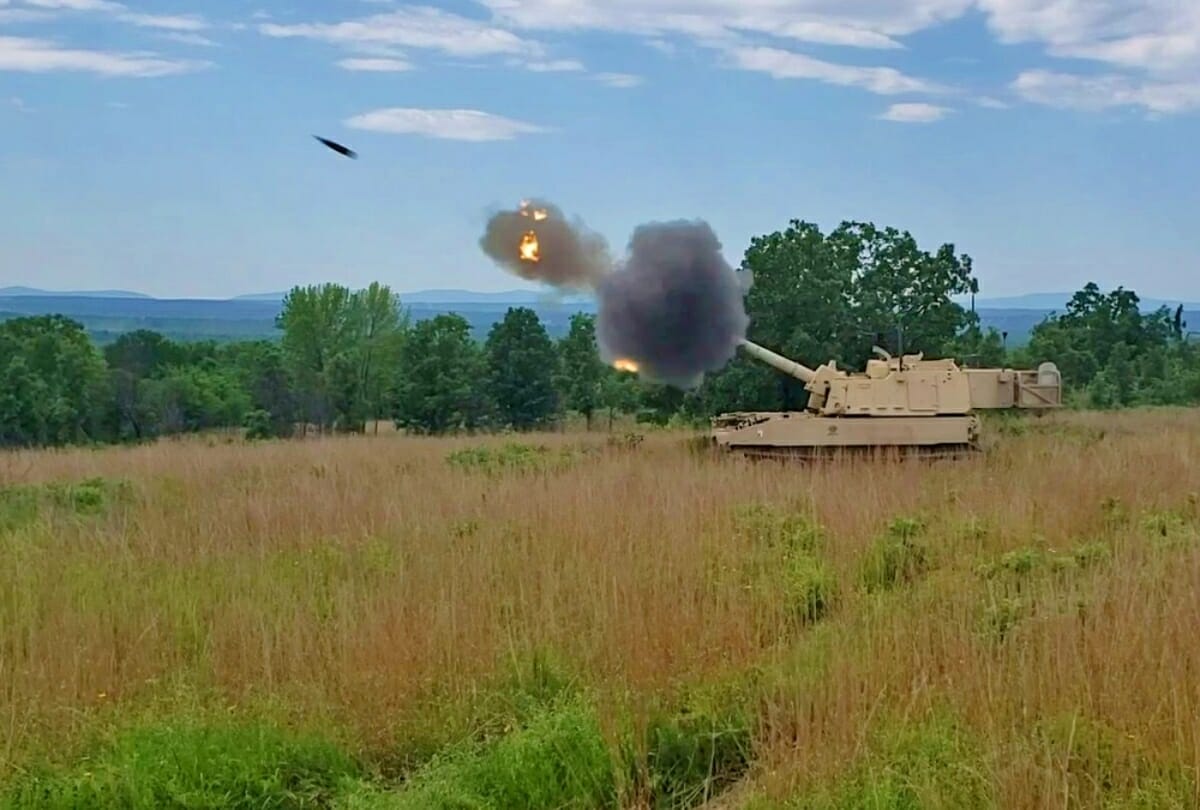

Arkansas is home to many people, past and present, that have served in the military. With over 200,000 veterans in the state and over 3,000 Arkansans currently serving in the military, Arkansans continue to play an important role in the service of their country. The state also supports military installations that house and train servicemen and women from around the United States.
There are currently five active military bases in Arkansas. The Army, Air Force and the Arkansas National Guard are all active in the state. The Navy and the Coast Guard do not have a presence in Arkansas.
Little Rock Air Force Base | Jacksonville
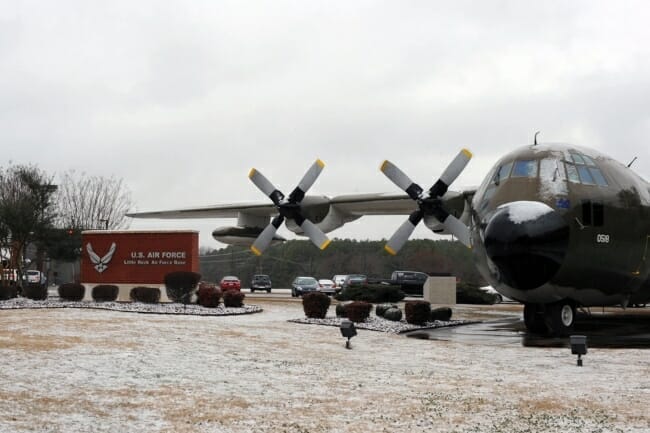
Snow Falls on a C-130 outside the base front gate Feb. 13, 2012, at Little Rock Air Force Base. Photo by Airman 1st Class Rusty Frank, 19th Airlift Wing Public Affairs.
Although named the Little Rock Air Force Base, the base is actually located in the city of Jacksonville in Pulaski County. The base opened in 1955 after private groups in Little Rock helped raise money to buy land next to the Arkansas Ordnance Plant, which helped manufacture bombs, fuses, and other equipment for World War II. When the base opened in October 1955, the public was invited for an open house and 85,000 people turned up to see the new base.
The 70th Strategic Reconnaissance Wing and the 384th Bombardment Wing were both assigned to the new base in Little Rock. The base had B-47 Stratojet bombers as well as RB-47 reconnaissance aircraft and refueling aircraft as well. In two short years, the base had 5,500 military personnel and over 300 civilians on base. Missions included reconnaissance flights over the Soviet border.
In the early 1960s, the Air Force built 18 Titan II Intercontinental Ballistic Missile Silos in Arkansas. The 308th Strategic Missile Wing was created and operated from the base, overseeing the missiles, including the 1980 accident that caused one missile to explode and kill one airman. The Arkansas Air National Guard also relocated the 154th Tactical Reconnaissance Squadron to the air base in 1962.
In the following years, the base saw some Wings activated while others were inactivated. It became a center for tactical airlift training for the Air Force and the Arkansas Air National Guard. Units from Little Rock Air Force Base have been involved in Operations Desert Storm and Desert Shield in Iraq, Operations Northern Watch and Southern Watch operating the no-fly zones over Iraq, and many humanitarian missions as well.
Little Rock Air Force base is currently home to nearly 7,000 military members, plus their families, and many civilian employees. Currently the 19th Airlift Wing oversees the largest fleet of C-130 aircraft in the world. The 314th Airlift Wing is the training arm of the airbase, and the Arkansas National Guard’s 189th Airlift Wing and 913th Airlift Group of the Air Force Reserves also operate from the base.
Fort Chaffee Joint Maneuver Training Center | Fort Smith
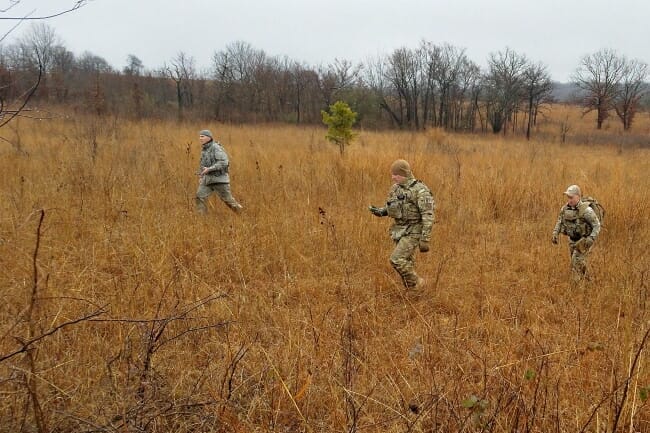
Senior Master Sgt. Bradley Rose, 185th Security Forces Squadron (from left), Master Sgt. Gregory Wardle, 153rd SFS, and Staff Sgt. Jonathan Finer, 124th SFS, tackle a land navigation course Jan. 23, 2020, at Ft. Chaffee, Arkansas. The team of Airmen from across the Air National Guard gathered to train for the Air Force Defender Challenge, a security forces skills competition. (U.S. Air National Guard photo by Master Sgt. Chauncey Reed)
In 1941 the U.S. Army established Camp Chaffee on 72,000 acres near Fort Smith. It was a training center but also served as a prisoner-of-war camp during World War II. The camp trained three different armored divisions at this time and held 3,000 German prisoners. After the war, Camp Chaffee was inactive until the Korean War, when it became the home of the 5th Armored Division.
In 1956, the Army chose the site as the new training center for its field artillery units and changed the name to Fort Chaffee to designate its more permanent status, although the fort would go through many changes in the years to come. After the field artillery training center moved to Fort Sill, Fort Chaffee held the 100th Infantry Division. In 1961, the fort became inactive. It was reactivated in 1974 as a refugee center and processed over 50,000 refugees from the Vietnam War. In 1980, Fort Chaffee performed the same function for Cuban refugees, this time processing over 25,000 people with medical screenings, sponsorship and relocation.
In 1995, the Army declared Fort Chaffee a sub-installation of Fort Sill and then turned the fort over to the Arkansas National Guard to be used as a training ground. Today Fort Chaffee is considered a joint training facility of the Arkansas National Guard with the ability to conduct field tests and train guardsmen. The fort doesn’t currently house active military members on its grounds.
Robinson Maneuver Training Center | Camp Robinson | North Little Rock
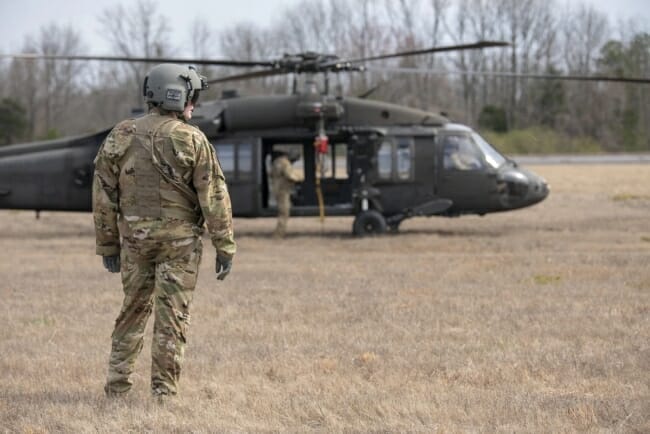
Arkansas Army National Guard G 3-238th Razorback Medevac unit flight paramedic Staff Sgt. John Iles participates in an aircraft dog hoist familiarization exercise with the Arkansas Army National Guard’s G 3-238th Razorback Medevac unit, Tuesday, March 03, 2020, at Robinson Maneuver Training Center in North Little Rock. (U.S. Army National Guard Photo by Civ. Zac Lehr)
In 1917 the state suddenly had the need to train many soldiers when the United States joined World War II. Camp Pike was quickly established in Little Rock. The camp began training soldiers by fall and within three years held over 10,000 soldiers. The camp primarily trained soldiers in the infantry. When the war ended, it acted as a demobilization center for soldiers returning from war. In 1922 the U.S. government returned the land to the state of Arkansas, stipulating that it must be used for military purposes.
Arkansas used Camp Pike as the headquarters for the Arkansas National Guard and as a CCC camp. It was also renamed Camp Robinson in 1937 after Arkansas senator Joseph Robinson. In the 1940s, even before the United States entered World War II, the U.S. government took Camp Robinson back from the state. They used it to house and train the 35th Division of the National Guard. The 35th Division had been activated for one year beginning in January of 1941. Just weeks before they were scheduled to be released from duty, Pearl Harbor was attacked, and the U.S. joined the war. The 35th headed to England.
While World War II continued, Camp Robinson was used as a training center for soldiers and medics. It held as many as 50,000 people at once, becoming one of Arkansas’s largest “cities” at the time. It also became a POW camp with 3,000 to 4,000 German prisoners of war. After the war ended, the camp was once again returned to the state and has been used as a training facility and headquarters for the Arkansas National Guard since that time.
Ebbing Air National Guard Base | Fort Smith
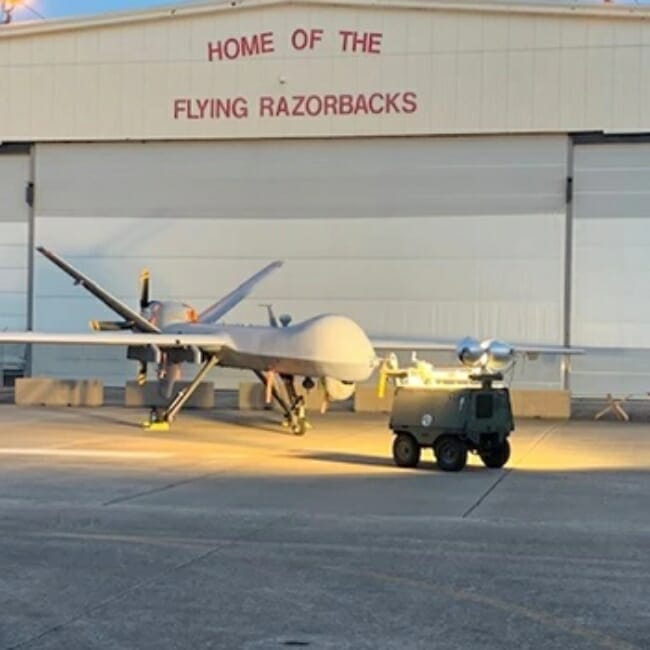
An MQ-9 From the 147th Attack Wing sits in front of a hangar on the 188th Wing flight line. Exercise Establish Fury marks the first time an MQ-9 Landed and launched at the airfield in Fort Smith Arkansas. Photo by: MSgt Chauncey Reed courtesy of Ebbing Air National Guard Base.
Ebbing military base was established in 1953. The 184th Tactical Reconnaissance Squadron of the Arkansas Air National Guard trained here, which later became the 188th Tactical Reconnaissance Group. During their long tenure at Ebbing Air Base, the 188th has flown nine different types of aircraft, including the F-16, and picked up the moniker “Flying Razorbacks.” In 2005 nearly 300 airmen and 12 F-16s deployed to Iraq to provide support in “Operation Iraqi Freedom.” In 2007 the 188th shifted from an F-16 unit to an A-10. In 2012, the base deployed 375 airmen and 10 A-10s to Afghanistan in its largest deployment to date. In 2013, the base once again shifted to a new aircraft, the unmanned M-9 Reaper. Along with the change came several deactivations of the 188th maintenance squadrons and the activation of the 153rd and 188th Intelligence Squadrons. Today the 188th is continuing its mission in intelligence and training for the Air National Guard at Ebbing Air National Guard Base.
Pine Bluff Arsenal | White Hall
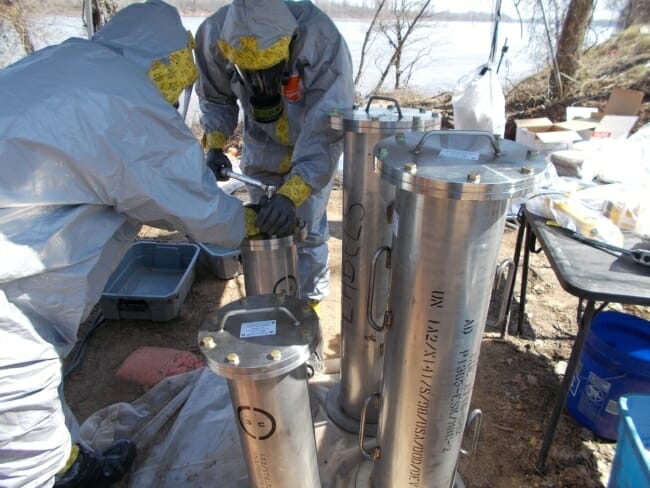
Members of the U.S. Army Engineering and Support Center, Huntsville’s project team package recovered chemical munitions at Pine Bluff Arsenal, Arkansas. The effort includes a 321-acre surface removal project with additional subsurface removal of munitions as well as groundwater and surface water sampling and testing. (Courtesy photo)
Pine Bluff Arsenal was created in 1941 to manufacture incendiary weapons for World War II. The arsenal is located outside of Pine Bluff near White Hall, a location chosen both for its remoteness and its ease of access to transportation by road, river and rail. After its construction, it employed 10,000 civilians and had 350 servicemen on site. The arsenal produced bombs, grenades, lethal gases and chemicals used in these devices. The work wasn’t without danger. Fifteen workers died from accidents within the facility. The arsenal also became a storage center for chemicals.
After World War II, the facility moved into the production of lethal biological pathogens. This lasted until 1979 when President Richard Nixon banned the use of biological weapons. Those pathogens were destroyed between 1971 and 1973. Between 2005 and 2010, the arsenal helped to safely destroy the last remaining chemical agents from munitions that had been recovered and stored in the facility. Currently, the arsenal manufactures smoke and incendiary devices, as well as tests chemical defense clothing. No major units are housed at the arsenal, and it is primarily staffed by Department of Defense civilians.
Arkansas’s military bases have held important places in their communities since the beginning of World War I, and they continue those roles today.
The header photo is an M109A6 Paladin howitzer of Charlie Battery, 2nd Battalion, 142nd Field Artillery Brigade, fires a round during a fire mission at the Fort Chaffee Joint Maneuver Training Center near Barling, Arkansas, May 14. U.S. Army National Guard photo by Spc. Stephen M. Wright.
We do the work.
You check your email.
Sign up for our weekly e-news.
Get stories sent straight to your inbox!












 Leave a Reply
Leave a Reply
[…] of these techs trained at the Army and Navy General Hospital in Hot Springs. WACs also served at Arkansas military bases Camp Robinson, Fort Chaffee, and the Pine Bluff […]